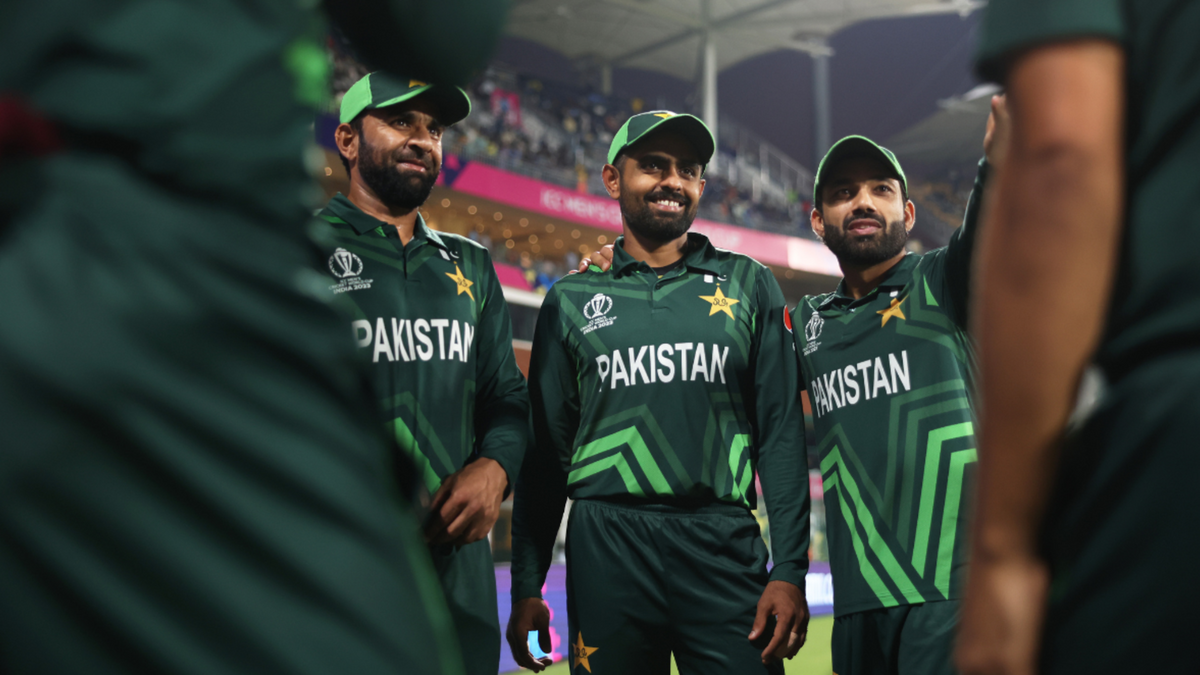
What is a close game? The 2023 World Cup has had its acolytes scratching their heads and rubbing their temples in an attempt to stretch the definition, with the competition so far feeling deprived of jeopardy and drama.
To bet on the World Cup with our Match Centre Partners bet365 head here.
This, of course, can be the way it goes. Cricket is a sport that can go for five days and still end in a draw, and part of the beauty of a close finish lies in its rarity. If every game is exciting then, to an extent, none of them are, with skill giving way to luck and the contest feeling like a lottery. There have also been notable upsets, with Netherlands overturning South Africa – otherwise one of the ‘form’ sides in the tournament – and Afghanistan, the story of the competition, with wins over England and Pakistan, trebling their tally of World Cup triumphs in eight days.
Sparse crowds have contributed to the lack of spectacle, and there is a danger here of narrative taking over, of looking back too fondly at old global events, remembering the good games and forgetting the duds. The 2019 edition was rain-affected to the extent that the ICC were slammed for having the temerity to hold a tournament in England. Was that event really that much better?
Let’s try and put some numbers on this. If we define a close game as being won by three wickets or fewer, or inside the last over, then we get 29 such games in World Cup history. Taking a threshold to give a similar number of games batting first, we get a margin of 15 runs. This feels about right, even if such a blunt measure will be imperfect – there will be some exciting games not included, and some that were dead for a while made to seem closer than they were by a late flurry. Still, it’s as good as we’ve got.
There have been 461 games played to a result in World Cup history, and 58 such ‘thrillers’. That works out as just over one in every eight games being close. There have been 24 games at the 2023 World Cup so far, and none fit the metric. Afghanistan beat Pakistan on the last ball of the penultimate over, India beat New Zealand by four wickets, and Netherlands beat South Africa by 38 runs. That’s as close as we’ve had.
Why have there been so few close games? Perhaps the mentality has changed. Chases of between 250 and 300, right where you’d expect to find thrillers, have either been knocked off at a canter or not got close to at all, with one or two exceptions. Perhaps the gap is too large between the best and the rest, with six totals in excess of 360 all leading to blowouts.
What’s odd is that the argument in favour of a ten-team tournament, for all its flaws, was that, by excluding the ‘weaker’ teams, there would be fewer thrashings. In 2019, despite the early washouts, there were three such games by the same point in the tournament. The 2022 Women’s World Cup, meanwhile, an eight-team event, was replete with close games, finishing as arguably the best ODI event ever, even if it was dominated by Australia.
That gets at the other metric for a good World Cup: a close race in the table, if not on the field. Again, however, there are concerns. While every team has won at least one game, a World Cup first, this has arguably impinged on the semi-final race, with upsets allowing the top four to pull away.
At the same stage in 2019, all but one team had won at least once, and, strangely, the rain had helped tighten the semi-finals race to an extent. After 24 games, everyone except Afghanistan was within reach of the 11-point marker that ended up being enough for New Zealand, and not quite enough for Pakistan.
The semi-final race went deep as well. England lost to Sri Lanka and Australia to leave them needing two wins from two, and to thrust Sri Lanka, with six points from six games, unexpectedly into the hunt. Likewise, had Bangladesh won their last two, they would have finished on 11 points, alongside New Zealand. Pakistan went into their last game with a mathematical chance of catching New Zealand on net run rate. South Africa lost to New Zealand in the 25th game to effectively end their hopes, in a thriller that also fits into our threshold, while West Indies and Afghanistan crashed out early.
This time, someone needs to go on a run to outstrip even Pakistan’s four wins on the bounce in 2019 to truly make it interesting, with all of New Zealand, South Africa, Australia and India in sight of six wins even with margin for error. Bangladesh and the Netherlands are already assured of finishing on fewer than six wins, while one of Sri Lanka and England will join them today. Afghanistan, England and Pakistan – the last two of whom are yet to play each other – need to win four in four to reach six wins. If results go a certain way, the race could be done with 10 days to go.
Pakistan, mercurial as they are, look the best placed to go on a run, and South Africa, up next, is the perfect starting point. Should Shaheen Shah Afridi rediscover his sizzle, should Haris Rauf breathe fire again, should Shadab Khan become an all-action livewire again, and should Babar Azam shroud the team from the outside noise and reclaim his own ‘world’s best’ mantle at the same time, they will be hard to stop. If this Indian World Cup is to be remembered in a good way, it’s the host’s arch rivals who hold the key.








